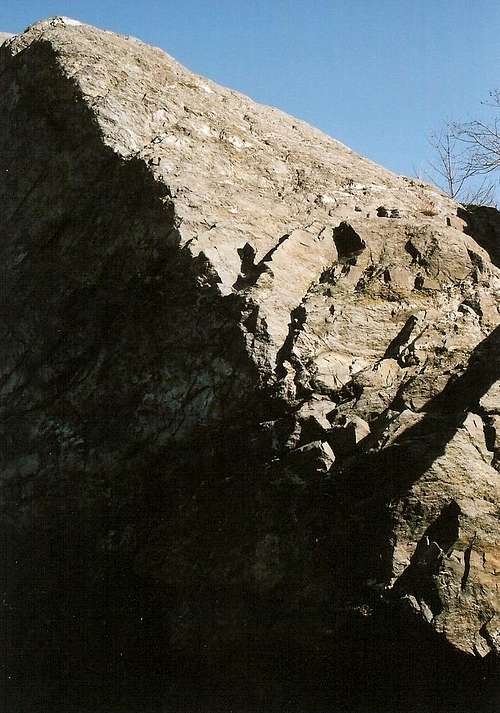-
 5640 Hits
5640 Hits
-
 78.27% Score
78.27% Score
-
 9 Votes
9 Votes
|
|
Mountain/Rock |
|---|---|
|
|
39.00007°N / 77.2326°W |
|
|
Trad Climbing, Toprope, Bouldering, Scrambling |
|
|
Spring, Summer, Fall, Winter |
|
|
120 ft / 37 m |
|
|
Overview
Of the major climbing areas at Great Falls Park, Microdome is the smallest and is one of the closest to the visitor center and the three falls overlooks (it is easily visible from the second and third overlooks). From certain perspectives, this 40-foot crag does indeed look like a small dome, which probably explains its name. On the side facing the Potomac River (which, during high water, will make the base of this face inaccessible), there are six established routes ranging from 5.6 to 5.12a in difficulty. However, scramblers can find other routes on the crag from Class 3 to easy Class 5, mostly on the right (upstream) side of the outcrop, and the curious can walk to the top from the land side, after a little rock-hopping. Although Microdome is a small crag and therefore won’t offer the challenge of a long, engaging climb, its upshot is that you can do several or all of its routes in a single day.
Great Falls Park, near Washington, D.C., is administered by the National Park Service and is unofficially regarded as the top climbing area in the D.C. region, though it has rivals at nearby Carderock and Annapolis Rock, both in Maryland. Cliffs and outcrops range from Class 3 to 5.12, and the area has something for everyone. Out here, new climbers learn techniques, experienced climbers practice their skills as they train for other climbs, and true human spiders redefine their art.
An excellent resource for the area is Eric Horst’s Rock Climbing Virginia, West Virginia, and Maryland. The section on Great Falls provides one-sentence overviews of the routes.
Even better is the PATC Climbers' Guide, which focuses just on the Great Falls area.
Climbing on Microdome
Toproping is the norm in Great Falls Park, but some routes are suitable for leading. YOU decide when you examine the routes yourself.The established routes (right to left—upstream to downstream):
•MX (5.11d)
•M-16 (5.11a/b)
•M-1 (5.10c)
•Vision Route (5.12a)
•B-52 (5.9+)
•B-29 (5.6)
Do not take any of the established routes lightly, even the Class 5.6 one. Exposure on the routes tends to be quite severe, and falling into the river may be more dangerous than falling onto the rocks. The Park Service says that an average of seven drownings a year occur in the Great Falls area. The Potomac here is deep and very swift, and its currents are treacherous. Some bodies have been pinned down by the powerful waters or trapped under rocks.
Getting There
Locals will know their own best ways. For others, though, these directions are easiest to follow:From the western part of I-495, a piece of the Capital Beltway, take Exit 44 for Route 193, Georgetown Pike; this is the second exit south of the Maryland border. Drive west for a few miles until you see the well-signed road leading to Great Falls Park. Turn right and follow the road about a mile to the entrance station. Take an immediate right to reach the "lower lot."
Hike toward the river and the third overlook of the falls (the one farthest downstream and closest to the parking area). Look downstream from the overlook and spot Microdome. Then go back to the main path heading south. Just past the turnoff to the overlook you just visited, look for a wooden fence on your left. Follow that fence until you see a use trail leading out to the rocks, and then walk out onto the boulders. Hop, walk, and scramble to Microdome.
Camping
There is no camping in the park. The area adjacent to the park is private property. Great Falls is a day-use area.Red Tape
The park is open from 7 A.M. until dark. There is an admission fee, good for three days, of $10 per vehicle.Climbers are required to register (free). There is a registration box at the visitor center.
Drilling to place bolts is prohibited. If you use chalk, try to use colors that blend with the rock here.
The area is popular and can be quite crowded, especially on weekends spring through fall.
The park is home to copperheads. The danger, though slim, is greatest near the clifftops, where there are more places for snakes to be. Microdome, not being near the trees, is far less likely to have copperheads hanging out on it than the other major Great Falls crags are.



